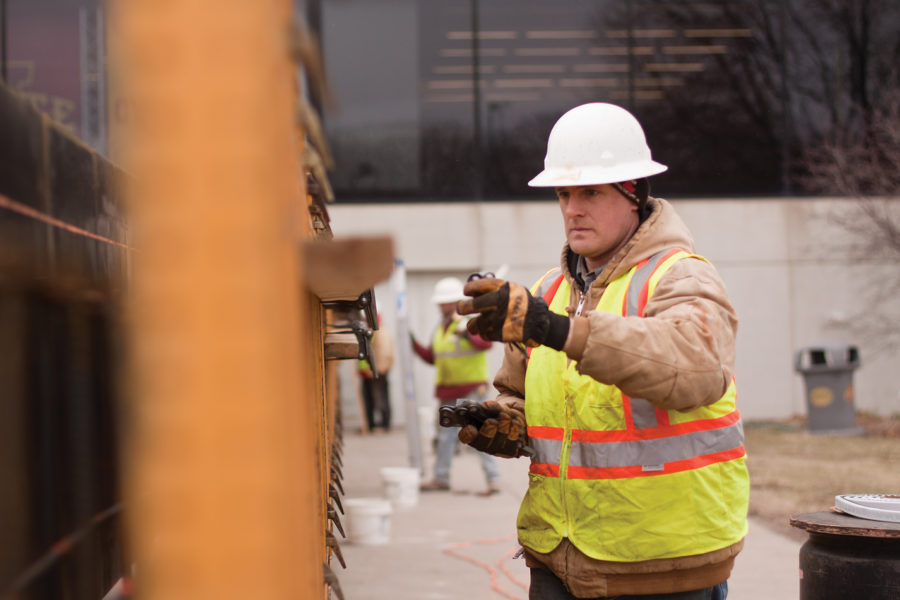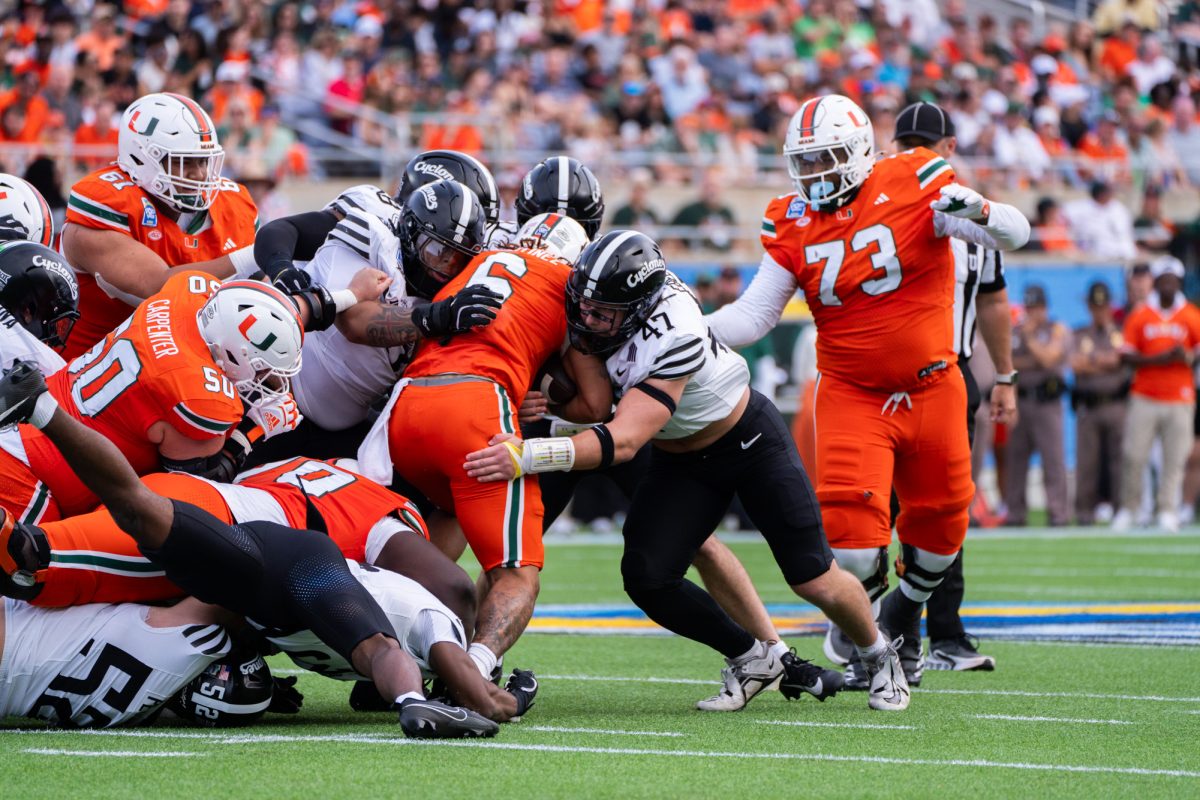ISU works to recycle while remodeling
Photo: Karuna Ang/Iowa State Daily
Gary Pennings, who works for Absolute Concrete, sets up an aligner system to straighten the walls that is part of the construction work for the Flood Prevention Program on Wednesday at the Hilton Coliseum.
January 23, 2013
Iowa State has several programs around campus that work hard to recycle everything they can, from wood to scrap metal.
Whether following demolition of a building, or extra parts not used in the rebuilding process, construction crews around the Ames area do their best to recycle and reuse as much material as they possibly can.
“We are running out of space to put waste, and recycling is the smart and right thing to do,” said Kerry Dixon-Fox, the coordinator of sustainable design and construction.
On all major capital projects, including those at Lied Recreational Center, Morrill Hall, Curtiss Hall and Hach Hall, the standard requires all workers to recycle at least 75 percent of the total waste from each project.
Dixon-Fox said the crews working around campus average about 90 percent when recycling possible waste.
“We know that we will be building new buildings and remodeling existing spaces, and we have to make sure we are refreshing our materials,” Dixon-Fox said.
On the five major projects done recently, the construction crews have managed to convert 9,530 tons of waste, including concrete, metal, wood, cardboard and paper.
While major capital projects have a standard of at least 75 percent of all waste recycled, smaller projects such as classroom remodels are now trying to hold themselves to this standard as well.
Eric Zierke, the supervisor of the building maintenance staff, said he believes it is only right to try to meet the goal of 75 percent waste conversion. The “bread and butter” of Zierke’s staff is on classroom and laboratory renovations.
“We try to adhere to the same standards as the staff on capital projects,” Zierke said. “It’s tough, but most of the time we can pull it off.”
Both Dixon-Fox and Zierke feel strongly about recycling as much waste as possible, and hope that the passion of the facilities planning and management staff will rub off on the greater ISU community.
Dixon-Fox said that recycling occurs both during the demolition and rebuilding of buildings.
Zierke agrees that economically, recycling presents an advantage for the construction crews, whether for the capital projects or smaller classroom projects.
“With scrap metal, we get some of our money back that we can put towards another project,” Zierke said.
Depending on the type of waste, it is disposed in different areas. For example, some wood is reused in the power plant, while all metal goes to the dumpster.
Once there is a load of waste, it is taken to Bell Savage in Boone, since there is no longer a local landfill in the Story County area.
Dixon-Fox said the ultimate goal in the coming years is to maintain the 75 percent waste conversion expectation on all projects.
“Hauling waste just to stick it in a landfill is not a smart thing to do,” Dixon-Fox said. “By recycling it, we can more quickly collect and get rid of it and it gets reused. We would wind up with a community full of landfills, and that is not efficient or safe.”







